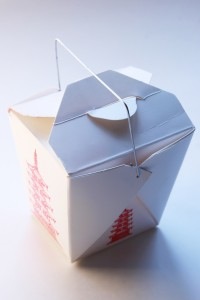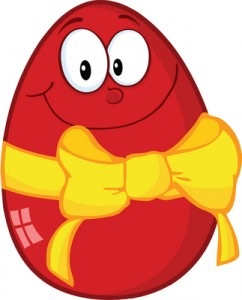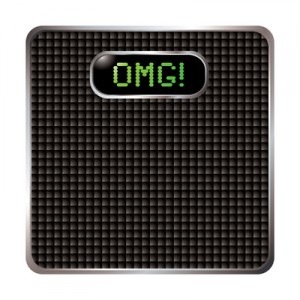
[Source: Today I found out]
food facts
The Chinese Takeout Container Is Really An American Oyster Pail
 You can probably find Chinese take-out food in white containers with wire handles in just about any part of the United States and in many other parts of the world.
You can probably find Chinese take-out food in white containers with wire handles in just about any part of the United States and in many other parts of the world.
Although those folded white paperboard containers immediately signify the type of food that’s inside, their derivation is, well, American.
It’s Really An Oyster Pail
The Chinese takeout container was patented in Chicago, on Nov. 13, 1894, by Frederick Weeks Wilcox. He created a “paper pail” from a single piece of paper that was creased into segments and then folded into what was, hopefully, a leak-proof container with a wire handle on top. The support folds were on the outside — creating a flat inside surface which made it pretty easy to slide food smoothly onto a plate.
The whole idea was based on an oyster pail – a wooden pail used to transport oysters. The paper oyster pail was developed when oysters, which were very popular and used to be more plentiful and less expensive than they are today, were shucked by an oyster seller when they were purchased. The raw oyster meat was then taken home to be used in cooked dishes. Because shucking oysters requires some amount of skill to avoid badly cut fingers, having someone else do this was a good thing. So, after the oyster seller wrestled the shells open, the dripping oyster meat that was removed had to be transported in something. The paper oyster pail proved to be an inexpensive and sanitary way to do this.
Takeout Food Becomes Popular
After the Second World War, Americans developed a huge interest in prepared food that could be picked up from restaurants and heated up at home. Because it’s tasty, a little different, pretty cheap, and travels well, American Chinese food became very popular.
The Adaptable White Box
When oyster availability started to decline and Chinese takeout food started to become popular, the nearly leakproof, durable, disposable, inexpensive, and available oyster pail was quickly adopted for “Chinese take-out.”
And, for good reason. The design of the box is multi-purpose. It usually self-closes with a tab and because of the way the box is folded, it allows some steam to escape from hot food. If you’re careful, you can remove the flaps, unfold the sides, and use the container as a flimsy plate.
Over time, some adjustments have been made in the boxes that make them more suitable for the modern-day kitchen: you can find microwave-safe cartons that use glue instead of wire along with dye free and unbleached environmentally friendly varieties.
But, one thing has not changed. As most takeout food lovers know, one of the best things about the uniquely shaped box is that with the long reach of chopsticks you can still eat right out of the container.
Protein: Have You Ever Wondered How And Why It Fills You Up?
Protein Really Does Help You Feel Full, But Why?
According to the September 2012 Tufts University Health & Nutrition Letter, French researchers published the findings of a study that confirms that dietary protein affects satiety – the feeling of being full and satisfied — something that a lot of people seem to know but that hadn’t previously been explained. The researchers found that there’s a chain reaction of signals between your brain and your digestive system that explains why this happens.
Why Does Protein Make You Feel Full?
When you eat and start digesting dietary protein, it stimulates activity of molecules called mu-opioid receptors, the same receptors that are responsible for your body’s reaction to morphine. As the protein is being digested, the receptors send signals to your brain, which then tells your intestines to release glucose. As your glucose (blood sugar) levels start to rise, both your hunger and your desire to eat starts to get suppressed.
How Much Protein?
The good news is that most of us, barring certain problems, usually meet or exceed our protein requirements. Protein is a very common part of a lot of the foods that we eat — especially if you’re eating a pretty varied diet. Most Americans get about 12-18% of their calories from protein sources.
Every cell in our bodies contains protein – with the exception of bile and urine. Our bodies need that protein to form new cells, repair old ones, and build and maintain muscles. People with medical issues may have different protein needs and research is showing that protein intake in older adults may help with frailty.
What Are Good Sources Of Protein?
A gram of protein has four calories but the problem is that a lot of our dietary protein comes from large portions of animal sourced foods — like fatty meats and full fat dairy — and not from lean meat, fish, beans, and certain vegetables and whole grains.
The National Academy of Medicine says that most adults can meet their daily need for protein with two to three servings of protein rich food.
Recommended servings might be:
- 1/2 cup of cooked dried beans
- One ounce of cheese, two tablespoons of peanut butter, or one egg
- Two to three ounces (about the size of a deck of cards) of cooked poultry, lean meat, or fish
- Two to three ounces of soy protein (such as tofu or soybeans).
- An egg is almost a perfect protein source. One large cooked egg has more than six grams of protein and about 70 calories.
Good vegetable protein sources are: black, pinto, garbanzo, and kidney beans; split peas; peanuts and peanut butter; sunflower seeds; nuts; and soy products.
Animal sources might be: skinless poultry; bosom; lean cuts of beef and pork trimmed of visible fat; fish and shellfish; and low or non- fat dairy products.
These Calories Still Count
It’s way too easy to forget those little clumps of calories that “jump” into your mouth and ultimately register on the scale.
These Calories Still Count . . .
- the candy bar you bought at the gas station and ate in the car
- the 3 tootsie rolls you snagged from the receptionist’s desk
- the couple of samples of cheesecake you grabbed at Costco
- the grilled cheese sandwich you finished off of your child’s plate
- the cookie batter you tasted and licked from the bowl and beaters
- the leftovers you finished because there was too small an amount to save
- the toppings you added to your ice cream or the sauce or dressing you added to your salad or sandwich
Of Course They Count . . .
Obviously, calories do count, it’s just that all too frequently we neglect to add them – remember them – or acknowledge them (that would mean having to admit that you ate that candy bar).
FYI: That’s why a food journal can help with managing your weight. By writing down everything that you eat – not at the end of the day but when you eat it – you’re forced to acknowledge all of the random food that you pop into your mouth.
The Center for Science in the Public Interest uses frozen yogurt to illustrate how mindlessly adding toppings adds a whopping amount of calories to what might be thought of as a healthy food.
“Let’s say you start with just 200 to 300 calories’ worth of frozen yogurt. (That’s a medium or regular at places like Red Mango, Pinkberry, or TCBY.)
But then the toppings call your name. Forget the chocolate chips (80 calories per scoop), the gummy bears (80), and the Oreo pieces (60). Even the ‘healthy’ toppings like granola (60 calories), nuts (100), and ‘yogurt’ chips (100) pile on the calories.” Your low(er) calorie treat ends up being a high calorie dessert.
10 Bits of Food Trivia You Always Wanted to Know

Source: Today I found out

